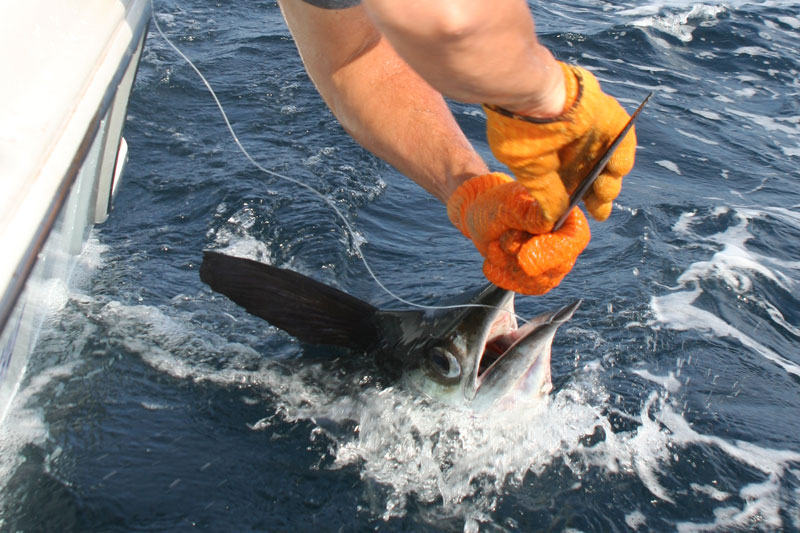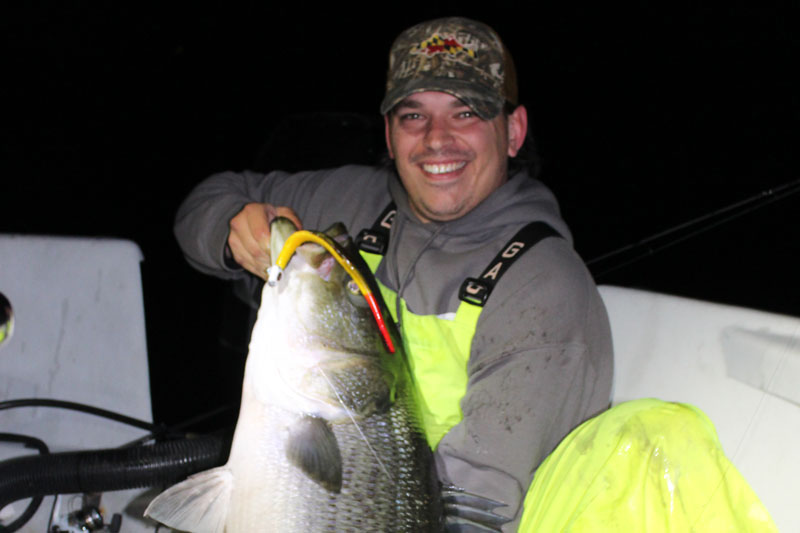Aside from articles that include a collection of tips, like Surf Fishing Tips for Beginners and Top 10 Tips for Bottom Fishing, in every edition of FishTalk we include a couple of extra eclectic fishing tips – after all, what angler doesn’t appreciate a fishing tip here and there? And unless you’ve been saving each and every edition of FishTalk since its inception, many of those tips have probably been forgotten over time. So we thought we’d collect up the tips from 2017 and 2018, and amass them here on the internets, where they’ll be forever cataloged for your fishing pleasure.

- When casting to fish under working birds, always use a side-arm cast and keep your lure as low to the water as possible. Never use an overhand, arcing cast. Do so, and you’re likely to end up landing a bird.
- When landing a fish by swinging it into the boat, never grab your rod above the grip or stick it straight up at 180 degrees. Either maneuver can break your rod, especially pricey graphite models.
- When putting live baits into a livewell, never over-crowd the fish. Otherwise, when you arrive at your destination those frisky fish will have become lethargic losers—if they’re still even alive. As a general rule of thumb limit yourself to one bait per gallon of water when you’re dealing with very delicate fish, like live bunker. If the baitfish are of a fairly hearty variety, like spot, two per gallon isn’t going to be a problem. And if they’re extremely rugged fish like mullet, three or four per gallon should be okay.
- If your boat has an onboard tackle stowage station, drop a cedar block into each drawer. It’ll absorb moisture, and help prevent the corrosion that so often attacks hooks and other gear left on a boat for extended periods of time.
- If you bring a billfish up to your boat, always remember to grab the bill with your palm facing down—never grab from below and lift. If you do, the marlin may kick its tail and slash upwards with its bill. Leverage will not be on your side, and if you can’t control a slashing bill serious injury can result.

This mate has been speared twice - and learned his lesson. - When baiting up with green crab (or any sort of crab, for that matter) insert the hook point into a knuckle joint where the crab’s leg meets the carapace. Then, pop the point out through the shell so it’s fully exposed. This way, you’ll do the least amount of damage to the crab while baiting up, and the bait will be secure on the hook.
- When fishing for toothy fish that are too leader shy for wire, consider snelling your hooks. It doesn’t make them tooth-proof, but it does aid a bit in chaff protection.
- As the weather gets chilly, consider wearing nitrile gloves under your gloves. They don’t really provide much protection from the cold, but they will keep your fingers and hands dry—which in the long run will go a long way to keeping your hands and fingers warm.
- If big winter bluefin make a run off the coast this year and you get the chance to take a shot at them, make absolutely, positively sure you have a blue/white Illander rigged with horse ballyhoo in the spread. It’s likely the top-producing offering ever used while trolling for monster bluefin in this neck of the woods, and savvy anglers will never leave the dock without ‘em.
- Any time you’re fishing in cloudy water or low-light conditions where fish may have difficulty spotting your lure with their eyes, give them something else to hone in on: vibrations. Bladed lures, lures with rattles, spoons, and “vibro” worm plastics will all help the fish find your offering, when visibility is restricted.
- When rigging up your rods for a serious catfishing trip, spool with bright-colored line. Once you add a clear leader the fish won’t notice one bit, and the highly-visible line will allow you to easily see where the current may be dragging your baits, and if any lines get too close to one another, after you fan-cast a large number of offerings.

Colors can help, when setting out a number of catfish lines at the same time. - When jigging for flatties, always (always!) use braid line and a fast-action rod. Unlike fishing for flounder with bait you’ll need to set the hook immediately, and stretchy mono will result in missed fish.
- When chumming for stripers, always use monofilament line. They’ll often nibble a bit before they really bite, and a little bit of stretch in the line is a good thing.
- If you’re using a multi-hook deep-drop rig with circle hooks for golden tilefish, don’t reel up the moment you get a fish on the line. Leaving it down there for another few minutes often leads to a multiple hook-up, and once the tilefish have a circle hook in the corner of their jaw, they rarely get free.
- When targeting cobia with chum or live baits, always rig up with circle hooks. They will improve your strike-to-hookup ratio significantly, just as long as you remember not to set the hook. The best tactic? Leave rods in the holders until they bend over under significant tension; Rodney the Rodholder is very good at hooking cobia with circle hooks.
- When pulling a green spreader bar for yellowfin tuna, use a Green Machine for the hook-bait. It’ll have significantly more action than the regular plastic squid on the bar.

Green Machines are utter killers, for tuna fish. - Do different colored heads on your parachutes make a difference? Yes, often they do! Be sure to start a day of trolling with a broad mix of dark and light heads, and adjust your spread as you learn which is most effective.
- When rigging a squid for nighttime swordfish, use floss and a rigging needle to attach the tentacles to the mantle. Otherwise, an attacking sword often chops the squid in two, eats half (naturally the half without the hook) and then disappears. Use a second piece of floss to support the mantle on the leader, so it doesn’t slip down and ball up.
- No matter whether you’re fishing live bait or dead bait, whole fish or chunks, always remember that when fishing with a circle hook, keeping the hook as exposed as possible is a key to success. Otherwise, the bait often interferes with the hook finding its purchase.
- When fishing lures at night, make sure to pick one with lots of color contrast; this will help the fish spot it in the inky darkness.

Color contrast is a good thing! Photo courtesy of Capt. Josh Lowery - Don’t set out your unmarked planer boards until you get some bright orange or yellow flags for them. Seriously people, we know you’re out there and you know who you are – get some flags! Please!
- Whenever triggerfish are in the plan, remember to down-size your hooks significantly. Despite their body size, their tiny mouths means that hooks appropriate for perch fishing are in order.
- Always be sure to use the hook-keeper or the feet of your guides, to secure your lures. Putting the hook through the eye of the guide causes tiny chips and chinks in the ceramic liner which may be too small to see, but causes abrasion on your fishing line.
- When rigging a ballyhoo with an O-ring, leave a little of the bill behind instead of snipping it completely off. As long as the ring is centered properly, the bit of bill will dig in like the lip of a lure, and provide a more natural swimming action.